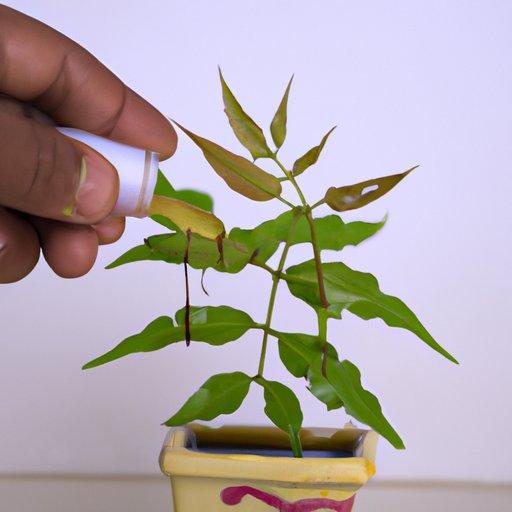Introduction
Neem oil is a vegetable oil derived from the seeds of the neem tree, which is native to India. It has been used for centuries as an effective natural insecticide and fungicide. In recent years, it has become popular as a safe and eco-friendly way to keep pests away from indoor plants.
Applying neem oil to indoor plants can provide numerous benefits. It helps to repel bugs, prevent fungal diseases, and improve overall plant health. With the right preparation and application techniques, you can enjoy the full benefits of using neem oil on your indoor plants.

Preparing and Applying Neem Oil
Before you can apply neem oil to your indoor plants, you need to prepare it properly. First, mix one teaspoon of neem oil with one quart of warm water in a spray bottle. Shake the bottle vigorously to mix the solution. Make sure the neem oil is fully dissolved in the water before use.
Once the solution is ready, spray it onto the leaves of your indoor plants. Make sure to cover both sides of the leaves and the stems. You can also spray the soil around the base of the plant to discourage bugs. Avoid spraying the flowers, as this can damage them.
When applying neem oil, it’s important to use the right amount. Too much neem oil can be toxic to plants, so it’s best to err on the side of caution. A good rule of thumb is to use no more than one teaspoon of neem oil per quart of water.

Best Practices for Using Neem Oil
When using neem oil on your indoor plants, there are a few best practices you should follow. For starters, you should only apply neem oil when temperatures are between 60 and 85 degrees Fahrenheit. Applying neem oil in higher or lower temperatures can cause leaf burn.
It’s also important to note that neem oil needs to be applied regularly to be effective. Most experts recommend applying neem oil once every two weeks as a preventative measure. If you’re trying to get rid of existing pests, you may need to apply neem oil more frequently.
Finally, it’s important to take safety precautions when using neem oil. Make sure to wear gloves and protective clothing when handling neem oil, and avoid breathing in the fumes. Also, make sure to keep neem oil away from children and pets.
Caring for Indoor Plants with Neem Oil
After applying neem oil to your indoor plants, there are several steps you can take to ensure optimal plant health. Start by monitoring your plants closely for any signs of stress or damage. Neem oil can sometimes cause leaf discoloration or wilting, so it’s important to be vigilant.
Be sure to water your plants regularly and provide adequate sunlight. This will help to counteract any negative effects of neem oil. Additionally, fertilizing your plants can help to promote healthy growth and development. Finally, it’s important to remove any dead or damaged leaves regularly to prevent disease.
Conclusion
Using neem oil on indoor plants can be a great way to keep pests away and improve overall plant health. To get the most out of neem oil, it’s important to prepare and apply it properly. Be sure to follow best practices, such as applying neem oil in moderate temperatures and avoiding over application. Additionally, it’s important to monitor your plants and provide proper care after applying neem oil.
With the right preparation and application techniques, you can enjoy the full benefits of using neem oil on your indoor plants.


